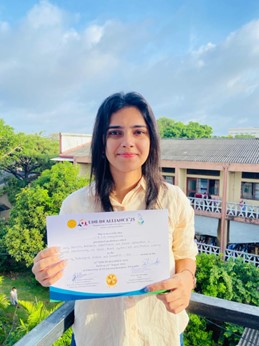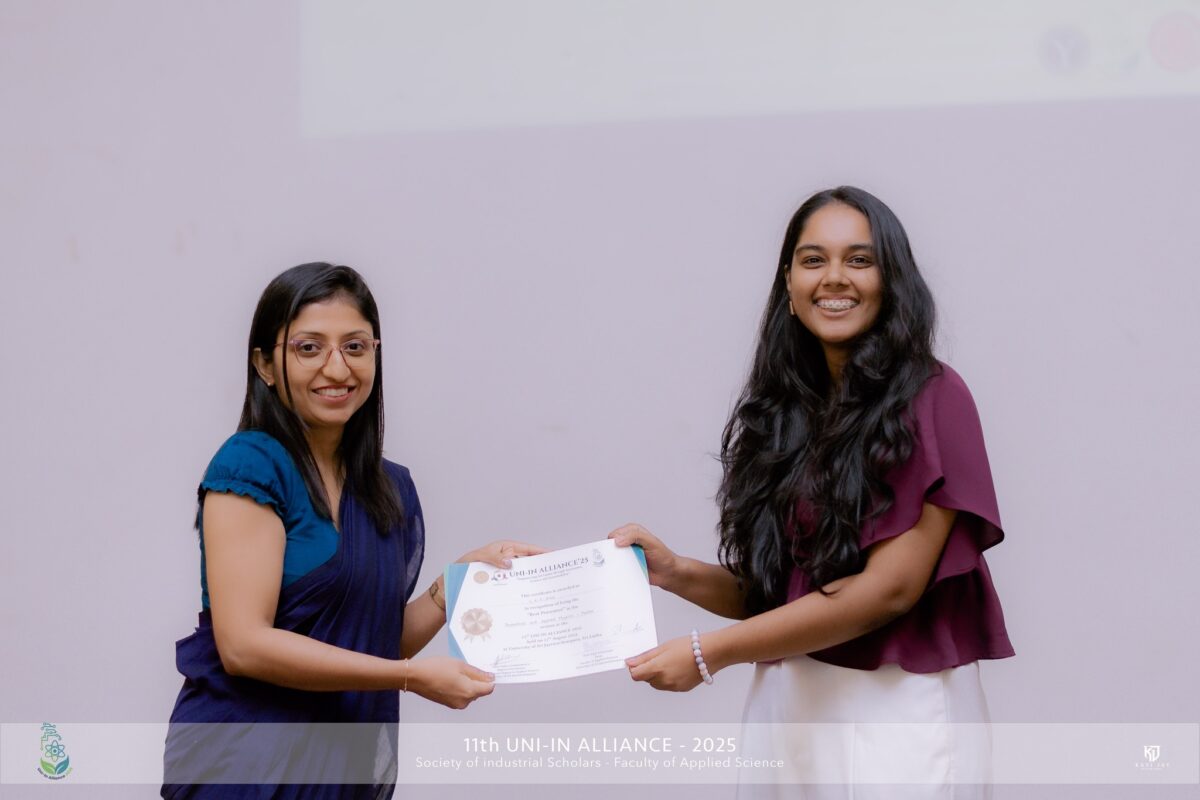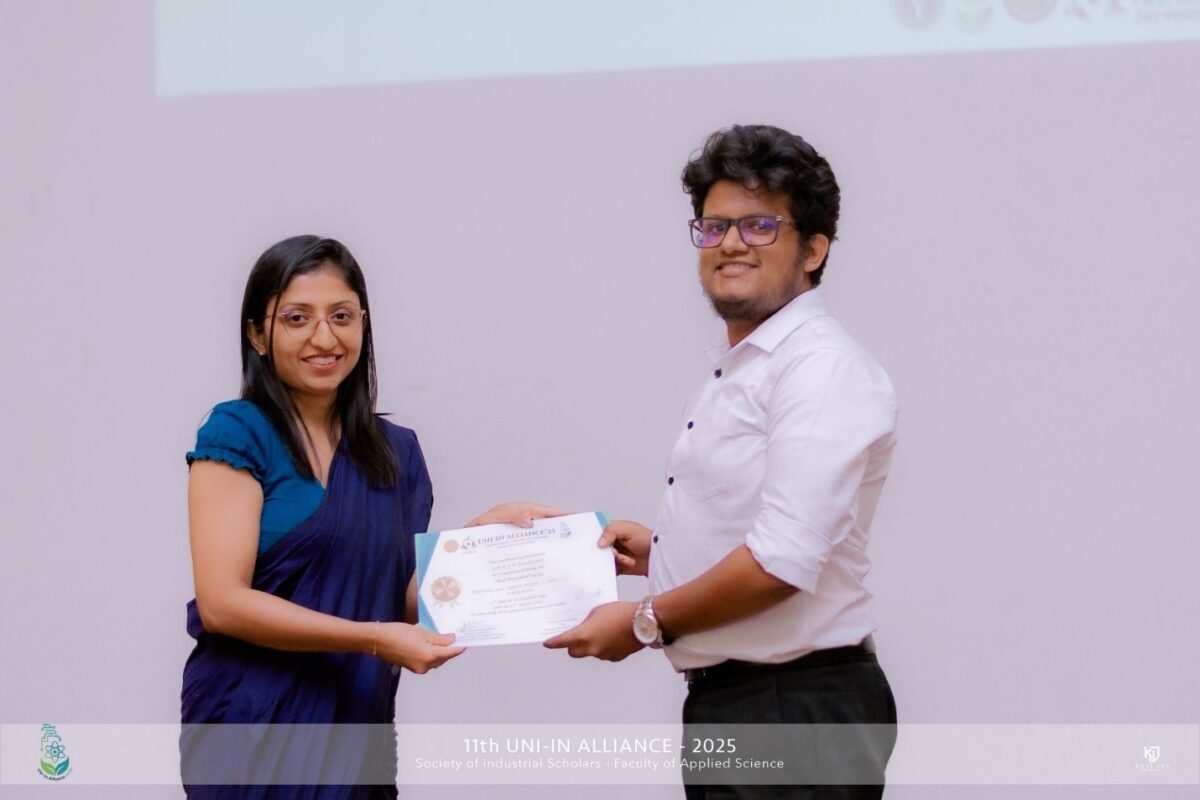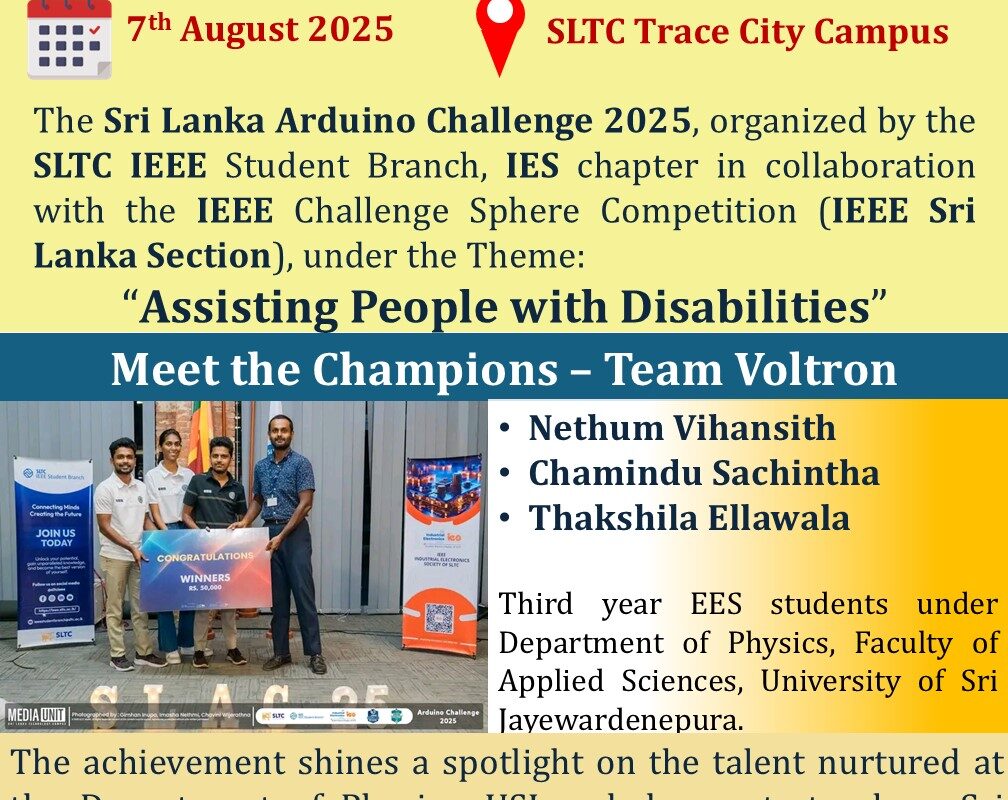Ms. L.K.I. Silva, a student of the Department of Physics, B.Sc. (Hons) in Applied Sciences (Physics) degree program, received the Best Presenter Award in the Theoretical and Applied Physics (Poster Presentation Category) at the 11th Consecutive Annual Undergraduate Research Symposium “UNI-IN ALLIANCE 2025”, organized by the University of Sri Jayewardenepura. The research was supervised by Prof. N. G. S. S. Gamage (Department of Physics, University of Sri Jayewardenepura) as the internal supervisor and Mrs. H. P. U. Fonseka (Space Applications Division, Arthur C. Clarke Institute for Modern Technologies) as the external supervisor. Her research, titled “Temporal Analysis of Temperature in the Sinharaja Rainforest Using MODIS Satellite Data”, investigated long-term temperature trends and forest cover changes in Sri Lanka’s Sinharaja Rainforest, a UNESCO World Heritage Site. The study utilized 21 years of MODIS satellite-derived land surface temperature data (2000–2021). The findings highlighted a warming trend and reduction in forest density, underscoring the value of remote sensing for climate and ecological monitoring in data-scarce regions.
This research presents a sensor-based IoT system using ESP32 to enhance efficiency in apparel manufacturing. By integrating touch, IR, vibration, and current sensors, it captures real-time operator cycle time and machine runtime. The system identifies bottlenecks, predicts anomalies, and reduces downtime through machine learning analysis. It automates performance tracking, highlights skill gaps, and supports predictive maintenance. Data is visualized via a dashboard, enabling informed decision-making and streamlined production. Compared to existing tools like Thulita and Andon, this solution offers accurate, real-time insights, improving productivity and reducing machine repair costs in live production environments.

“I’m truly grateful for the chance to present in the Engineering, Technological Science, and Innovation category. I feel a lot of pleasure to do my best and aim for the Best Presenter Award. This opportunity means so much to me and will be a big step forward in building my future career. Thank you again for this opportunity.”
Mr. R. M. B. M. B. Alawathugoda from the Department of Physics was awarded the title of “Best Presenter” in the Theoretical and Applied Physics – Oral presentations session at the 11th Undergraduate research symposium “UNI-IN ALLIANCE 2025”, held on 27th August 2025 at the University of Sri Jayewardenepura.
Presentation was done on the abstract titled “Comparative Analysis of V-I versus B-V Colour-Magnitude Diagrams of Globular Cluster NGC 1866”




